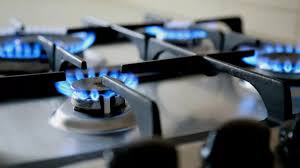A recent study conducted by researchers from the Stanford Doerr School of Sustainability has shed light on the alarming levels of nitrogen dioxide (NO2) present in households across the United States, particularly those equipped with gas or propane stoves. The findings, published in Science Advances, underscore the pervasive health risks associated with indoor air pollution.
Professor Rob Jackson, the senior author of the paper, expressed surprise at the rapid escalation of pollutant concentrations in bedrooms following gas stove usage. “I didn’t expect to see pollutant concentrations breach health benchmarks in bedrooms within an hour of gas stove use, and stay there for hours after the stove is turned off,” remarked Professor Jackson, emphasizing the broader implications beyond just the kitchen environment. “Pollution from gas and propane stoves isn’t just an issue for cooks or people in the kitchen. It’s the whole family’s problem.”
The study highlights the adverse health effects of prolonged exposure to high levels of nitrogen dioxide, including intensified asthma attacks and hindered lung development in children, ultimately leading to premature deaths. While outdoor sources such as vehicle emissions traditionally contribute to NO2 exposure, the researchers estimate that household gas and propane stoves may be responsible for up to 200,000 current childhood asthma cases in the U.S.
Lead author Yannai Kashtan emphasized the significant impact of stove usage patterns on exposure levels, emphasizing the importance of effective ventilation systems. “We found that just how much gas you burn in your stove is by far the biggest factor affecting how much you’re exposed. And then, after that, do you have an effective range hood—and do you use it?”
The study utilized sensors to measure NO2 concentrations in over 100 homes, incorporating data into a model to estimate nationwide averages and short-term exposures under various conditions. Results indicate that typical gas or propane stove usage increases NO2 exposure by an estimated 4 parts per billion annually, approaching levels deemed unsafe by the World Health Organization for outdoor air.
Moreover, disparities in exposure exist across demographic groups, with smaller homes and minority households experiencing heightened risks. The study underscores the urgent need for mitigation strategies, particularly in vulnerable communities where economic constraints may limit appliance upgrades.
The research marks a significant step in understanding the intricate relationship between gas stoves and indoor air quality, prompting calls for enhanced ventilation measures and policy interventions to safeguard public health. As Professor Jackson succinctly puts it, “Electric stoves emit no nitrogen dioxide or benzene. If you own a gas or propane stove, you need to reduce pollutant exposures using ventilation.”











